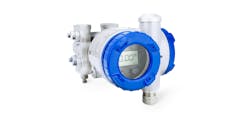An adage called Segal’s Law states, “a man with one watch knows the time, but a man with two watches may never be sure.” But the fellow with two watches has something the former does not: a measure of uncertainty. While both might be in error, the degree to which his instruments differ can support a judgement of “good enough.”
Accuracy to the millisecond might be critical for a rendezvous in orbit, but not to catch the L-train. We can say for all measurements, the value of accuracy depends on the consequences of getting it wrong.
Sometimes we learn this lesson by trial-and-error. In the 1980s, a chemical facility was required to reduce its volatile organic compound (VOC) emissions and constructed a waste heat boiler/incinerator to combust the VOCs in the stream. A service provider specializing in emissions measurements was contracted to monitor the stack of the new apparatus. Their extractive analytical equipment determined the minimum temperature to achieve the 99.99% destruction target.
Inadvertently, they adopted the unchallenged certainty of the man with a single watch. When a sister facility a thousand miles away faced the same task, they used the results from the first measurement to make many design choices. But when the second incinerator was commissioned, it proved incapable of achieving the target destruction of VOCs. The combustion specialists were stumped. How could they miss by so far?
It was revealed the culprit: a “Type K” thermocouple had been configured in the original installation as a “Type J” making it appear that 99.99% destruction was achieved hundreds of degrees cooler. Delays and costly upgrades of burners, control valves and fuel pipelines followed. The designers were diligent about not overdesigning the incinerator, but their reliance on an inaccurate measurement cost millions of dollars.
In today’s lean staffing environment, advice to validate the accuracy of a measurement can be scarce. It was for a mechanical engineer specifying a new economizer (a preheater for incoming boiler feedwater), who loaded years of history for an incoming waste gas stream. The averaging of a pitot tube/differential pressure flowmeter’s output in the site’s historian didn’t announce the fact that it was using the uncompensated measurement. Standard cubic feet (SCF) or pounds per hour (PPH) are, in essence, mass flow measurements, and any D/P flowmeter only indicates a mass flow accurately (with a typical uncertainty of +/- 2%) at its “sizing conditions” —the temperature, pressure and composition (specific gravity) at one selected operating point. There was a compensated measurement in the system but there wasn’t anyone around who may have asked, “what tag are you using again?”
After startup, the new economizer was a smashing success, demonstrating improved energy recovery from the boiler flue gas, thanks to increased surface area. But in a few months, the flow across the somewhat fouled economizer was moving it off its mounting, stressing connections enough to create leaks. Eventually entire sections of the economizer had to be bypassed, costing many thousands of dollars in daily energy losses, as well as increasing greenhouse gas emissions.
Even tighter tolerances were haunting the small batch brewer, who was befuddled by the rapid attenuation and undesired off-flavors in his flagship lager. The Braumeister really wants to “drive the car,” that is, use his kit without assiduous or nerdy insights into the nuts and bolts of the brewery. What wasn’t obvious was the installation details of the temperature sensors in his fermenters. All were installed through the glycol (coolant media) jacket, without any isolation or insulation. Consequently, the actual temperature was consistently higher than what was indicated, with the error growing as the fermenter cooled.
When operating a processing plant, it’s not unusual that “two watch” situations confront us. Instrumentation and control professionals are valuable when we identify uncertainty and errors, and work with our process counterparts to confront the cost of getting it wrong.





